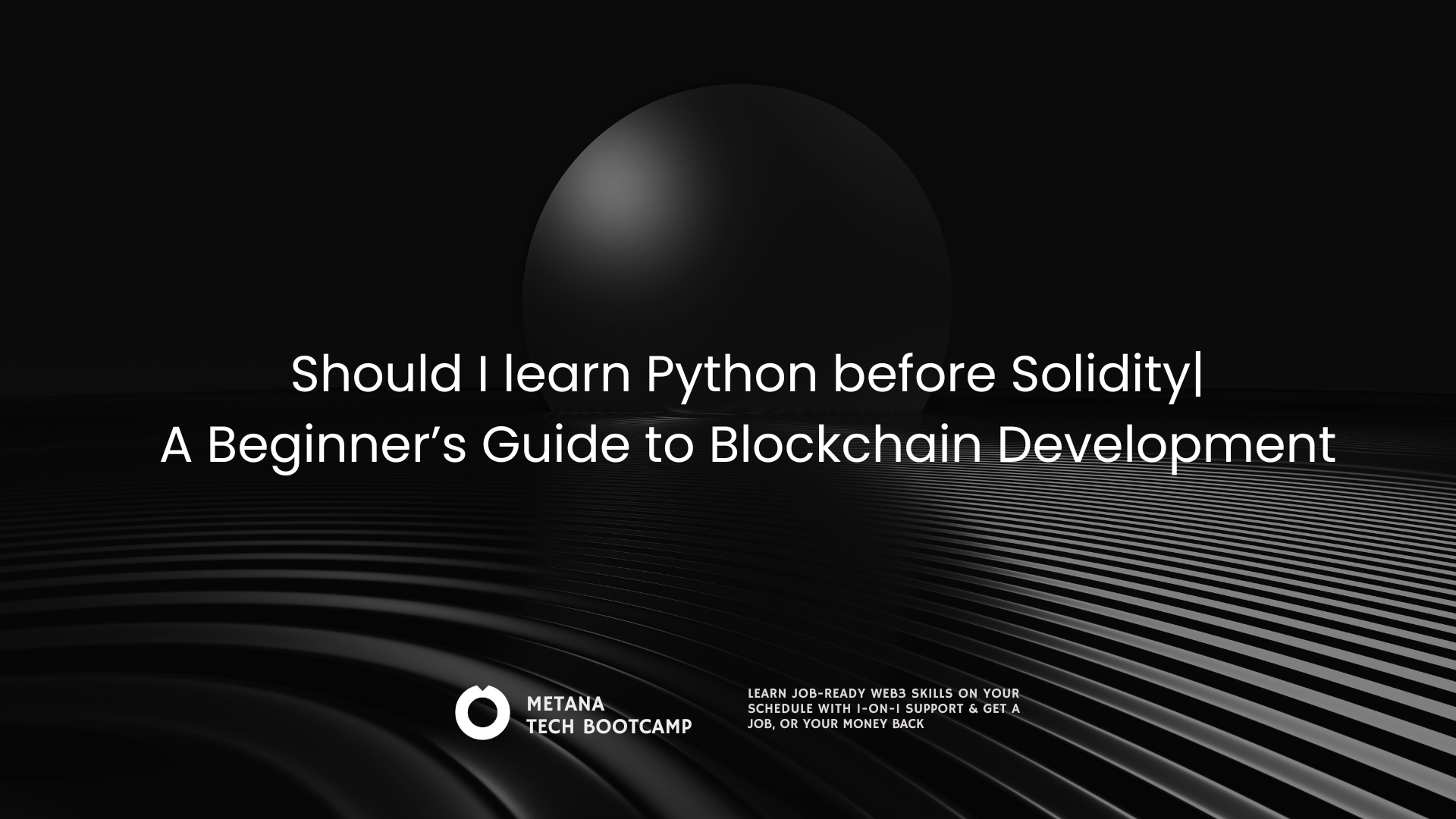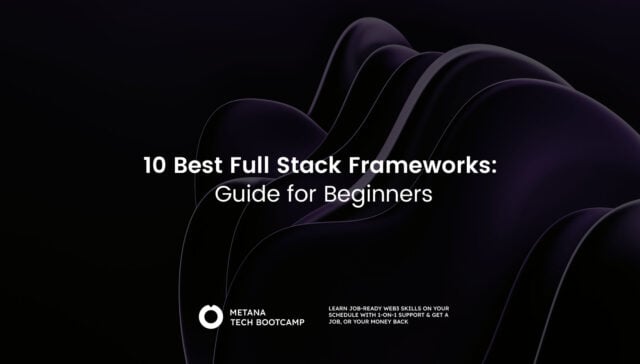Yes, you should absolutely learn Python before Solidity. Here’s why: Python provides the essential programming fundamentals that make Solidity learning 50-75% faster while opening doors to diverse blockchain career opportunities beyond smart contract development.
The blockchain development landscape presents aspiring developers with an important question: should I learn Python before Solidity? The answer is a resounding yes, and this comprehensive guide will show you exactly why this strategic approach maximizes your learning efficiency and career prospects.
Whether you’re a complete beginner or transitioning from another field, understanding the synergy between solidity vs python is crucial for building a successful career in Web3 development. Let’s explore how the Python-first approach creates stronger, more versatile blockchain developers.
What Are Python and Solidity?
Python
Python stands as one of the most beginner-friendly programming languages in the world. Created with simplicity and readability in mind, Python serves as an excellent foundation for understanding fundamental programming concepts. Its clean syntax and extensive ecosystem make it particularly valuable for blockchain developers.
Key Python characteristics for blockchain development:
- Clear syntax that mirrors natural language patterns
- Extensive libraries including web3.py for Ethereum interaction
- Strong community support with abundant learning resources
- Versatile applications from data analysis to smart contract testing
- Rapid prototyping capabilities for blockchain concepts
Python’s role in blockchain extends far beyond simple scripting. Developers use Python for building decentralized applications, testing smart contracts, and creating blockchain analytics tools. The language’s flexibility allows developers to work with various blockchain protocols and create sophisticated automation tools.
Solidity
Solidity is an object-oriented, high-level language specifically designed for implementing smart contracts that govern the behavior of accounts within the Ethereum state. Unlike general-purpose languages, solidity was specifically designed for blockchain development from the start.
Solidity’s defining features:
- Ethereum-specific design optimized for smart contract development
- Static typing ensuring code reliability and security
- Inheritance support for complex contract architectures
- Gas optimization capabilities for efficient execution
- Built-in security features addressing common smart contract vulnerabilities
Influenced by C++, Python, and JavaScript, Solidity combines familiar syntax patterns with blockchain-specific functionality. This makes it accessible to developers with traditional programming backgrounds while providing the specialized tools needed for decentralized application development.
Python vs Solidity: Key Differences Comparison
Understanding the fundamental differences between Python and Solidity helps clarify why learning Python first creates such a strategic advantage. Here’s a comprehensive comparison:
| Aspect | Python | Solidity |
|---|---|---|
| Primary Use | General-purpose programming, web development, data science, AI, etc. | Smart contract development on Ethereum blockchain |
| Type of Language | High-level, interpreted, object-oriented | Turing-complete, statically-typed, compiled language |
| Syntax | Simple, readable, beginner-friendly | C++/JavaScript-like syntax, more complex for beginners |
| Environment | Runs on local machines, servers, or cloud platforms | Runs on Ethereum Virtual Machine (EVM) on the blockchain |
| Libraries/Frameworks | Extensive libraries for data science, web apps, AI, etc. | Limited libraries, mostly focused on Ethereum smart contracts |
| Data Handling | Great support for handling data types, structures, and APIs | Limited to Ethereum-related data structures like mappings and arrays |
| Execution | Executes on a central server, client, or cloud | Executes in a decentralized, immutable environment on the blockchain |
| Error Handling | Easy to debug and handle errors using Python tools | More challenging to debug due to decentralized and immutable nature |
| Use Case | Building web apps, scripts, AI models, etc. | Building decentralized applications (dApps) and smart contracts |
| Speed | Generally slower, interpreted | Fast execution on the blockchain, but costly due to gas fees |
| Learning Curve | Easy to learn and highly recommended for beginners | Steeper learning curve, especially for blockchain concepts |
Key Insight: Python’s forgiving nature and extensive debugging tools make it perfect for learning programming fundamentals, while Solidity’s strict requirements and financial implications make it better suited for developers who already understand programming principles.
Why Python First Makes Sense
Building Programming Fundamentals
Learning a programming language without understanding programming fundamentals is like learning tools without understanding the craft. Python provides an ideal environment for developing these essential skills:
Core programming concepts mastered through Python:
- Variables and data types with intuitive syntax
- Control structures (loops, conditionals) clearly expressed
- Functions and modules promoting code organization
- Object-oriented programming concepts in digestible form
- Error handling and debugging methodologies
Starting with Python allows you to focus on programming logic rather than complex syntax. Many successful blockchain developers, including those from non-technical backgrounds like law, begin their journey with Python before transitioning to Solidity.
Understanding Blockchain Concepts Through Python
Python’s extensive blockchain libraries provide hands-on experience with core concepts:
Web3.py integration benefits:
- Direct blockchain interaction without complex setup
- Transaction creation and signing using familiar Python syntax
- Smart contract deployment and testing capabilities
- Real-time blockchain data analysis and monitoring
- Wallet management and cryptocurrency operations
This practical exposure through Python creates a solid foundation for understanding how smart contracts fit into the broader blockchain ecosystem. The sequential learning path from Python to Solidity ensures comprehensive understanding of both blockchain fundamentals and smart contract development.
Career Advantages of the Python-First Approach
The modern blockchain developer requires skills beyond smart contract creation:
Full-stack blockchain development skills:
- Backend development using Python frameworks like Django or Flask
- API integration connecting traditional systems with blockchain
- Data analysis for DeFi protocols and NFT marketplaces
- DevOps automation for deployment and testing pipelines
- Machine learning applications in blockchain analytics
Python proficiency opens doors to diverse roles within blockchain companies, from smart contract auditing to DeFi protocol development. This versatility proves invaluable in the rapidly evolving Web3 landscape.
Common Misconceptions and Myths Debunked
Myth 1: “Solidity is Easy Enough to Learn First”
While Solidity shares similarities with JavaScript, Python, and C++, jumping directly into smart contract development without programming fundamentals creates significant challenges:
Reality check:
- Smart contract bugs can result in financial losses
- Gas optimization requires deep programming understanding
- Security vulnerabilities need systematic thinking to prevent
- Complex debugging demands strong analytical skills
- Professional standards expect comprehensive testing knowledge
Myth 2: “Python Isn’t Useful for Blockchain Development”
This misconception overlooks Python’s extensive blockchain ecosystem:
Python’s blockchain applications:
- DeFi protocol backends powering major platforms
- Trading algorithms for cryptocurrency markets
- Blockchain analytics for security and compliance
- Smart contract testing frameworks and tools
- Cryptocurrency exchanges backend infrastructure
Major educational programs and professional courses integrate Python throughout the entire blockchain development curriculum, demonstrating its continued relevance.
Myth 3: “Learning Python First Wastes Time”
The efficiency argument against Python preparation ignores long-term benefits:
Time investment analysis:
- Initial Python learning: 3-4 months intensive study
- Solidity acceleration: 50-75% faster learning with foundation
- Career versatility: Multiple role opportunities
- Problem-solving speed: Significantly improved debugging
- Professional development: Continuous skill application
The compound benefits far outweigh the initial time investment.
Want to checkup on more misconceptions regarding blockchain development?
Bottom Line
The answer is clear: Yes, absolutely. Learning Python before Solidity is a strategic choice for aspiring blockchain developers. Python builds strong foundational skills like problem-solving and debugging, which are essential when working with Solidity.
Rather than choosing between the two, leveraging both languages will set you up for success in blockchain development. Start with Python, and you’ll soon be creating secure, efficient smart contracts in Solidity.
Take action now: Enroll in a Python-first blockchain development program and accelerate your path to becoming a Web3 developer.
Found this comprehensive guide valuable? Help other aspiring blockchain developers by sharing it with your network. The Web3 community grows stronger when we support each other’s learning journeys.
Here’s a question for you: What’s the biggest challenge you anticipate in learning blockchain development, and how do you plan to overcome it?
Frequently Asked Questions

1. Should I Learn Python Before Solidity for Blockchain Development?
If you’re new to programming, learning Python before Solidity will give you a strong foundation in coding fundamentals, making it easier to understand Solidity when you start learning blockchain development.
2. Is Python Necessary Before Learning Solidity?
Python is not necessary to start learning Solidity, but it can be helpful. Python provides a solid understanding of basic programming concepts, which are useful when transitioning to more advanced languages like Solidity for smart contract development.
3. What Is the Difference Between Python and Solidity for Blockchain Development?
Python is a general-purpose programming language used in backend development, data analysis, and blockchain testing. Solidity, on the other hand, is the main language for smart contracts on the Ethereum blockchain. Python is more versatile, while Solidity is blockchain-specific.
4. How Long Does It Take to Learn Python Before Solidity?
Typically, it takes 1-2 months to become comfortable with Python if you’re starting from scratch. Once you’re familiar with programming fundamentals, you can transition to learning Solidity and begin building smart contracts for blockchain.
5. Should You Learn Python or Solidity First for Ethereum Development?
If you’re interested in Ethereum development and smart contract programming, learning Solidity first may be the best route. However, if you’re completely new to programming, starting with Python can help you build a strong foundation in coding that will make Solidity easier to understand.
References
- Metana.io. (2023). “Programming Languages for Ethereum Development.” Retrieved from https://metana.io/blog/learning-programming-languages-for-ethereum-development-python-javascript-and-solidity/
- Ethereum.org. (2025). “Smart contract languages.” Retrieved from https://ethereum.org/en/developers/docs/smart-contracts/languages/
- Ethereum.org. (2025). “Ethereum for Python Developers.” Retrieved from https://ethereum.org/en/developers/docs/programming-languages/python/
- Solidity Documentation. (2025). “Solidity 0.8.30 documentation.” Retrieved from https://docs.soliditylang.org/








